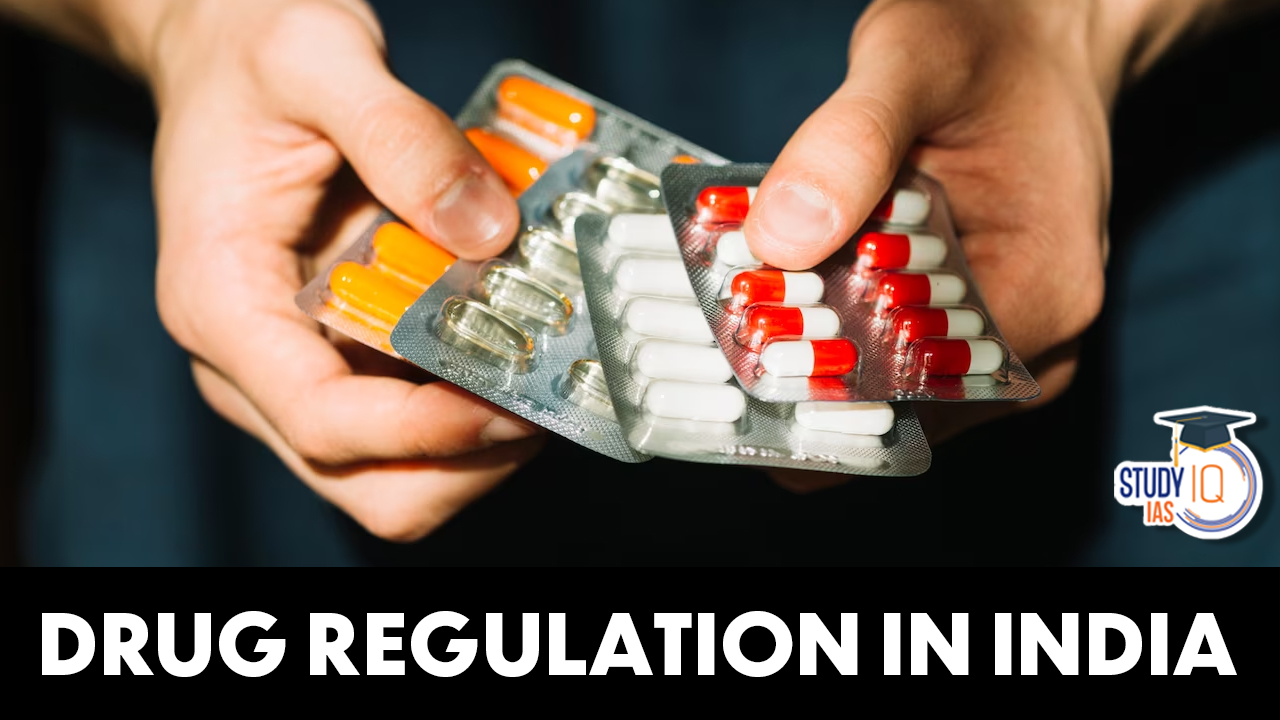Table of Contents
Context: Since October last year, Indian pharma companies have been under constant international scrutiny for exporting allegedly contaminated drugs, which have led to deaths of children.
More on the News
- Recently, Nigeria raised the red flag on two oral drugs; Cameroon too sounded an alarm over another cough syrup reportedly made in India when several children died.
- Sri Lanka called out two drugs manufactured in India linking them to adverse reactions in patients.
- In the latest move, Gambia has declared that from July 1, it is running strict quality control checks on all pharma products shipped into the country, before they leave Indian shores.
- In December 2022, Uzbekistan’s health ministry has said that several children have died after drinking a cough syrup manufactured by Indian drug maker Marion Biotech.
How drug regulation works in India?
- The Indian drug system is mainly regulated under the ambit of the Drugs and Cosmetics Act of 1940, and by multiple ministries, including the Ministry of Health and Family Welfare.
- The Act and its corresponding rules allow the Centre and State to regulate different aspects of the drugs ecosystem.
| Main functions of the Central Government | Main functions of State Governments |
|
|
- Key authorities under the Drugs and Cosmetics Act of 1940:
- Central Drugs Standard Control Organisation (CDSCO): The CDSCO is the regulatory body responsible for the regulation and control of the import, manufacture, and sale of drugs in India. It operates under the Ministry of Health and Family Welfare. However, its not a statutory body.
- Drug Controller General of India (DCGI): The DCGI is the head of the CDSCO and serves as the principal regulatory authority for drugs in India. The DCGI is responsible for granting licenses for the import, manufacture, and sale of drugs, as well as monitoring their safety, quality, and efficacy.
- Drug Technical Advisory Board (DTAB): The DTAB is an advisory body that provides technical advice to the DCGI on matters related to drug regulation. It consists of experts from various fields, including medicine, pharmacy, and toxicology.
- Drug Consultative Committee (DCC): The DCC is another advisory body that assists the DCGI in formulating policies and regulations concerning drug control.
- State Drug Regulatory Authorities (SDRAs): which are statutory bodies created under the Drugs and Cosmetics Act, 1940, regulate drug policies at the state level. Falling under the ambit of the respective Health Departments of each state, SDRAs are tasked with limited aspects of drug regulation.
What are the challenges in India’s Drug Regulatory Ecosystem?
- Ambiguous Distribution of Powers and Responsibilities: The Centre and the States lack clearly codified distribution of powers and responsibilities.
- For instance, with Health being a State subject under the 7th schedule of the Constitution, states also exercise substantial drug regulation in addition to the provisions of the Act of 1940.
- Lack of Independence and Autonomy: The Central Drugs Standard Control Organisation (CDSCO) is not a statutory body, which limits its independence and autonomy.
- Similarly, State Drug Regulatory Authorities (SDRAs) face issues of lack of uniformity and proper demarcation of responsibilities, often being combined with food regulation departments.
- Insufficient Resources: The command-and-control architecture of drug regulation in India requires significant resources in terms of human capital and physical infrastructure.
- However, both the CDSCO and SDRAs lack adequate resources to effectively regulate the numerous pharmaceutical manufacturing units and drug companies across the country.
- Lack of Transparency: The decision-making process within the drug regulatory system in India is often opaque, and there is a lack of mandatory and comprehensive information sharing from the regulator.
- Outsourcing: There have been instances of Indian pharmaceuticals and big companies often outsourcing their manufacturing to smaller units. This creates a bigger problem as the country lacks the resources to maintain a regular quality check on these products.
- Corruption: Instances of corruption have been reported in the drug regulatory ecosystem.
Way Forward
- Streamlined Regulation System: Develop a clear and comprehensive regulation system that defines the roles and responsibilities of all stakeholders involved in drug regulation.
- One quality one standard: All state drug regulatory bodies should be merged with the Central Drugs Standard Control Organisation (CDSCO) to ensure “one quality one standard” for Indian drugs.
- Statutory Recognition for CDSCO: Grant statutory recognition to the Central Drugs Standard Control Organisation (CDSCO) to enhance its regulatory independence and autonomy.
- International Cooperation: Strengthen collaboration and cooperation with international bodies like the World Health Organization (WHO) to align regulatory standards and promote adherence to Good Manufacturing Practices (GMP).
- Allocation of Sufficient Resources: Allocate adequate financial resources to ensure the regulatory bodies, such as the CDSCO and State Drug Regulatory Authorities (SDRAs), have the necessary physical infrastructure and human resources for effective regulation.
- Enhance Transparency and Accountability: Promote transparency in the drug regulatory process by making information sharing mandatory and comprehensive.
- Strengthen Capacity Building: Invest in continuous training and capacity-building programs for regulatory officials to enhance their knowledge and expertise in areas such as scientific evaluation, risk assessment, and regulatory compliance.


 National Technology Readiness Assessment...
National Technology Readiness Assessment...
 Justice Mission-2025: China’s Live-Fir...
Justice Mission-2025: China’s Live-Fir...
 Suryastra: First Made-in-India Long-Rang...
Suryastra: First Made-in-India Long-Rang...

























